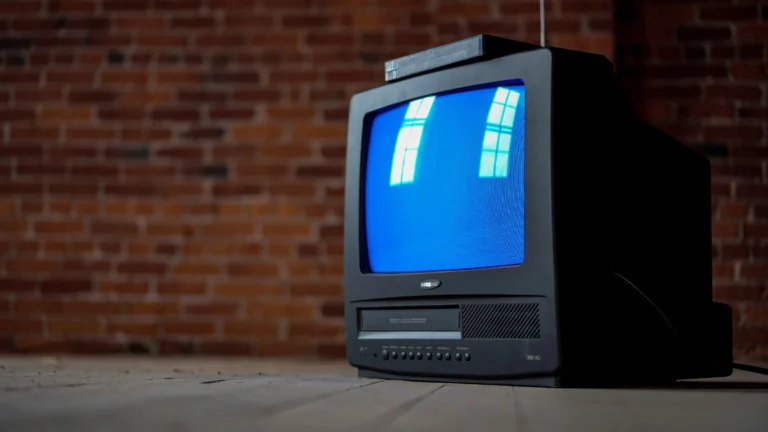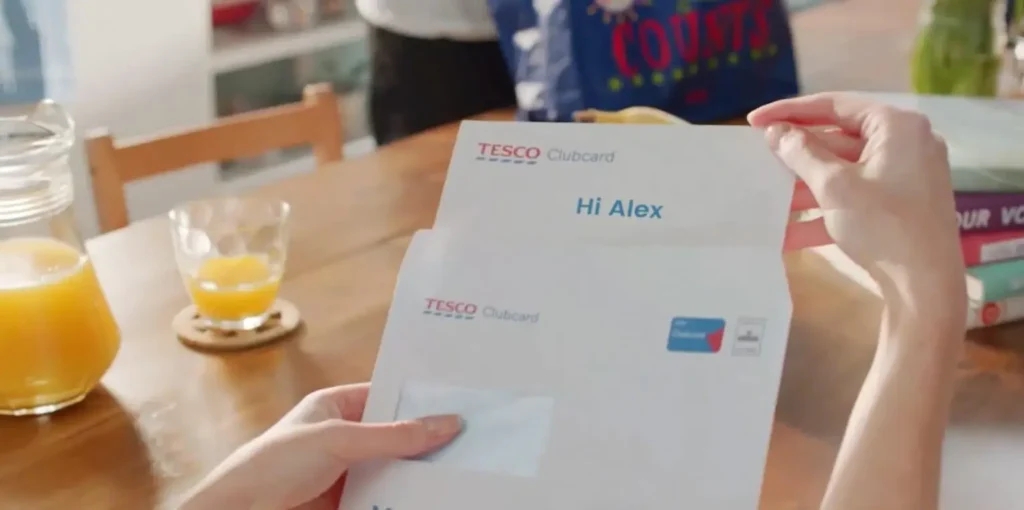Over the past 300,000 years, modern humans have relied overwhelmingly on visual information. Our brains are masters at quickly processing images, shapes, colors, movement and facial expressions. Long before we had spoken language, we relied on visuals to make sense of the world and survive it.
Even now, within 30 seconds of entering a room, I can quickly identify whether I’m among friends or in a fight-or-flight situation. How? By reading the people in it — their body language and facial expressions. It’s instinctual. These visual cues give us clues about who someone is and what their intentions might be.
That’s why visual storytelling — from cave paintings to today’s dynamic videos — has always been so powerful. It taps into our most foundational form of communication. And in an age where attention spans are on the decline, appealing to that ancient instinct can make all the difference.
Visual Communication Is Part of Our DNA
Did you know? We process visual information 60,000x faster than text. It’s no exaggeration to say that visual communication is hardwired into who we are. About 90% of the information transmitted to the brain is visual, which explains why images stick with us more than text.
In fact, researchers found that we can recognize an unfamiliar image in just 13 milliseconds. That’s faster than the average blink, which takes between 100 and 400 milliseconds.
Post on
No wonder visuals are such a powerful tool in communication. Whether it’s a symbol or a well-designed piece of content, the message lands faster — and often deeper — than words alone.
This natural ability to decode visuals almost instantly is the reason why images and videos continue to dominate everything from education to marketing. When you need to make a message stick, say it with visuals.
The Birth of Language
Believe it or not, humans have spent most of our time without language as we know it. Language only emerged an estimated 135,000 years ago, and it didn’t become widespread until around 35,000 years later. That means for roughly half of our existence, we were largely relying on gestures, facial expressions, body language and limited vocal sounds.
Written communication is even newer. The earliest forms of proto-writing — symbols that communicate limited information — showed up around 5,000 to 6,000 years ago. But true writing systems that could capture full spoken language took time to evolve. And for much of history, only a small portion of the population could read or write.
It wasn’t until Gutenberg invented the printing press in the 1450s that books became accessible to the general public. As books became a common item, literacy slowly transitioned from a luxury of upper society to a skill for the masses.
Still, being a relatively new medium of communication for the majority of the population, textual information is more challenging for our brains to retain. Our brains have to work harder to process written words, especially long ones. Reading is a learned skill, not an instinct — and today’s readers are discerning, distracted and in favor of scanning before digging in for a good read.
Case in point: Back in 2004, the average attention span on a screen was about 2.5 minutes. By 2012, it had dropped to 75 seconds. And now? We’re down to about 47 seconds on average, or a median of just 40 seconds, before our focus shifts.
In the digital age, we gravitate toward short, impactful content. Powerful headlines and snackable bits of visual content are what grab attention fast. So while language and literacy were game-changers for human communication, we’re still leaning hard on the instinctive power of visuals to get our point across.
From TV to ‘PV’ (AKA Personalized Video)
Now if we look at the evolution of human communication, there’s a clear pattern: Every new channel builds on the ones before it. From broadcast to 1:1 communication, every innovation has built on the last, slowly reshaping how we connect, share and understand one another.
Take radio, for example. When it was first developed in the late 1800s, its main use was for simple point-to-point communication across long distances. But it didn’t take long for it to become a mass communication tool. By the 1920s, radio had become a major source of entertainment, news and connection.
Then came television, an innovation built directly on radio’s foundation. The technology was around for decades before it really took off, but once people saw moving pictures paired with sound, it changed the game. The first TV shows were a natural progression from radio, with a host and guests talking with the video camera on them. It took years for other formats to come about, but once they did, TV transformed how we experienced the world.
The internet took that even further. What began as a way to share academic research has now become the No. 1 channel of human communication. Unlike radio or TV, the internet wasn’t just about broadcasting — it opened up two-way communication on a massive scale. Suddenly, everyone had the power to share, comment and connect globally. Today, the internet is the backbone of nearly all our communication, from emails to video calls to TikToks.

And now, thanks to the TV and the internet, we have a new revolutionary channel of video communication called Personalized Video. Like TV, Personalized Video broadcasts a visual and audio message to millions of people. The difference is that it’s much more personal and powerful.
What Is Personalized Video?
Rather than replacing what came before, each of the above technologies built on the foundation of the last. Personalized Video is the latest step in a long line of innovations — and it’s just getting started.
Like TV, Personalized Video offers an engaging visual and auditory experience. Like the internet, it’s scalable and interactive. But unlike most digital video, it’s not one-size-fits-all.
Personalized Video allows you to speak directly to an individual viewer, using their name, preferences, behavior and real-time data to create an experience that’s relevant and uniquely theirs. And even though it’s personal, you can still scale up and reach millions.
Imagine getting a video that says, “Hi John, here’s what you need to know about your upcoming trip,” or one that walks you through your new business account, like the video below. That’s Personalized Video in action.
Making Personalized Video Work for You
Naturally, with the development of a new communication channel, there’s confusion about how to utilize it. People tend to see a Personalized Video and think, “Wow, what should I do with it?” More often than not, it’s treated like an email. While it’s tempting to lean on old habits and drop a video into the same old format, Personalized Video can do so much more than that.
When it comes to dynamic, data-driven video, you need to shift how you think about storytelling. Remember, it’s not about broadcasting to the masses but about communicating 1:1. Beyond the visualization, the script, voiceover and pacing should emulate a relaxed face-to-face encounter that leaves you with a long-lasting, memorable impression.
The best part is that it can be used in all kinds of interactions. Personalized Video is incredibly versatile. Here are a few popular use cases where it works well:
- Customer onboarding: Welcome new users and walk them through their personalized setup or next steps.
- Bill explainers: Break down statements or usage history in a way that’s easy to understand — and far more human than a cold letter or email.
- Year-in-review videos: Surprise customers with a recap video that highlights their milestones for the year, whether that’s loyalty points earned or gaming wins, and reminds them why they love you.
- Sales: Send personalized product recommendations or promotions based on past behavior or stated preferences.
- Retention and churn prevention: Reconnect with lapsed users or remind customers to renew their service with you, and do it with a message that’s personalized to their experience with your brand.
You can even make it interactive. Interactivity turns the viewer from a passive recipient into an active participant, increasing engagement, understanding and conversion rates. Think clickable CTAs, fill forms and buttons that let users control what they see next.
Rocket Mortgage, for example, created this interactive onboarding video that lets viewers choose which topics they want to learn more about. Check out the interactive features yourself!
This level of control puts users in the driver’s seat and gives them only the info they need when they need it, making for a smoother, smarter customer journey.
The Bottom Line
Like with any new communication channel, there are best practices that you need to follow. If you want to learn more, check out our ultimate guide to Personalized Video. It’s packed with insights, examples and tips to get you started.
At Idomoo, we’ve helped over 100 enterprises bridge the user experience gap with customer-centric video experiences that increase loyalty and drive consumer engagement.
Plus, with Lucas AI Video Creator, building these experiences at scale has never been easier. Whether you’re sending a thousand videos or a few million, Lucas helps you generate dynamic, data-driven content in record time.
It’s all part of what we call Next Generation Video — a powerful blend of personalization, interactivity and AI that speaks directly to each customer. Our Next Generation Video Platform is purpose-built for enterprise-level scale, making it simple to launch millions of tailor-made videos that deliver results.
Want to see how it all works — or how it can work for you? Click below.






